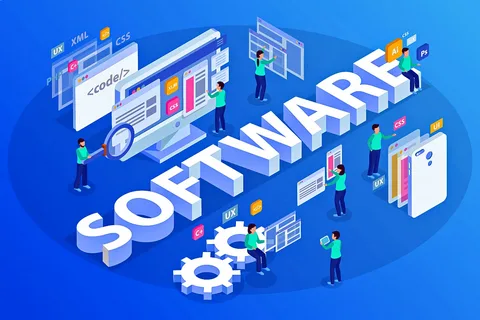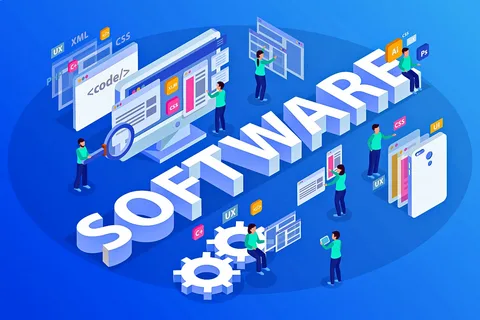The Importance of Software Reviews: Why They Matter for Consumers and Developers
In today’s rapidly evolving technological landscape, software is at the heart of nearly every business and personal process. From productivity tools to complex enterprise solutions, users rely on software to streamline their work, communicate, and solve problems. However, choosing the right software can be a daunting task, especially given the sheer number of options available. This is where software reviews come into play.
Software reviews provide valuable insights into the functionality, performance, ease of use, and overall quality of a software product. They help potential users make informed decisions and guide developers on areas for improvement. In this article, we explore the importance of software reviews, how they impact both consumers and developers, and how to write or evaluate a meaningful review.
What Are Software Reviews?
A software review is an evaluation of a software product, typically written by a user, reviewer, or expert in the field. Reviews may assess various aspects of the software, including:
- Functionality: How well the software performs its intended tasks.
- Usability: The user-friendliness of the software, including the design and navigation.
- Performance: How efficient the software is in terms of speed, reliability, and resource usage.
- Support: The quality of customer service, documentation, and troubleshooting resources.
- Price-to-Value Ratio: Whether the software offers value for the price, especially when compared to alternatives.
Reviews can be posted on websites, forums, app stores, or social media platforms. They often come with ratings, typically from one to five stars or through a percentage score, summarizing the reviewer’s opinion.
The Importance of Software Reviews
1. Informed Decision-Making for Consumers
For end users, software reviews are an invaluable resource. When considering a new software tool or product, reviews can provide insight into whether it meets their needs and expectations. Here are some ways software reviews benefit consumers:
- Real-World Experiences: Reviews often highlight real-world use cases, including the software’s advantages and limitations. Users get to see how the software behaves under various conditions, which may not be fully conveyed in marketing materials.
- Pros and Cons: Reviews typically provide both the strengths and weaknesses of the software. For example, a review may praise a tool’s speed but mention that it lacks certain features or has a steep learning curve. Such balanced feedback helps users make a more informed decision.
- Peer Recommendations: Many users trust the opinions of fellow consumers over advertisements or company-provided information. Positive reviews from users who share similar needs or challenges can strongly influence purchasing decisions.
- Comparing Alternatives: For consumers looking at multiple software options, reviews provide side-by-side comparisons, highlighting which tools excel in particular areas like functionality, pricing, or support.
2. Feedback for Developers and Companies
Software reviews provide developers and companies with direct feedback on their products. These insights can drive product improvements, help prioritize features, and improve the overall user experience. Here are some ways software reviews benefit developers:
- Identifying Pain Points: Negative reviews often point out recurring issues that users face, such as bugs, crashes, or difficulties navigating the interface. By paying attention to these comments, developers can address pain points in future updates.
- Feature Requests: Customers frequently share ideas for new features or improvements that would enhance the software. These reviews serve as a direct line of communication between users and developers, enabling them to align their product roadmap with customer expectations.
- Market Perception: Reviews help companies understand how their software is perceived in the market. This can guide marketing strategies and product positioning. Positive reviews can also act as a powerful tool for word-of-mouth marketing, enhancing the software’s reputation.
- Customer Support Insight: Feedback about customer service and support can help organizations identify areas for improvement in response time, accessibility, and overall service quality.
3. Building Trust and Transparency
For software companies, gathering reviews plays a critical role in establishing trust and credibility in the marketplace. Consumers are more likely to trust products with many positive reviews, as they perceive these products as being more reliable and effective. Additionally, reviews help promote transparency by allowing consumers to make decisions based on a wider range of opinions, rather than relying solely on a company’s marketing or sales materials.

The Impact of Reviews on Software Success
Software reviews can directly influence the success of a product. Here’s how:
1. Influencing Buying Decisions
Reviews often carry significant weight when consumers decide whether or not to buy or download a product. This is especially true for software available in app stores or through online platforms like Google Play, the Apple App Store, or SaaS platforms. Positive reviews with high ratings can drive more downloads and sales, while negative reviews can steer potential users away.
2. SEO and Discoverability
For developers, reviews play a role in search engine optimization (SEO) and discoverability. Positive reviews help software rank higher in search results, making it more likely for new users to find the product. Many platforms, like app stores, prioritize highly-rated software in their search results and recommendations.
3. Word-of-Mouth and Viral Growth
When users are happy with a product, they are more likely to share their experiences with others. This word-of-mouth marketing can significantly boost a software’s visibility. A positive review might even go viral if it resonates with a larger audience or addresses a widely felt problem.
4. Long-Term Customer Retention
While initial downloads and sales are important, software developers also rely on customer retention for long-term success. By paying attention to reviews and continuously improving the software based on user feedback, developers can build loyal customers who stick with the product and become advocates for it.
How to Write a Meaningful Software Review
Writing an effective and helpful software review is a skill. A good review provides valuable insights for other users while offering constructive feedback to developers. Here are some tips for writing an impactful review:
1. Be Specific
Avoid vague statements like “This software is great!” or “It doesn’t work.” Instead, focus on specific features or aspects of the software. For example, you might describe how the software sped up your workflow, the ease of installation, or any bugs you’ve encountered.
2. Describe Your Use Case
Mention how you’re using the software. Are you a business professional using it for project management, a student for educational purposes, or a developer for coding? Providing context helps others in similar situations understand how the software may fit their needs.
3. Mention Pros and Cons
Balanced feedback is the most helpful. If you like the software, highlight what stands out—whether it’s the design, customer support, or a specific feature. Similarly, if you face challenges, share constructive criticism. This transparency helps others gauge the software’s potential limitations.
4. Provide Suggestions for Improvement
Constructive feedback is a valuable part of any review. If there’s a feature you feel is missing or could be improved, mention it. This type of feedback helps developers understand what users truly want and often results in positive changes to the product.
5. Rate the Software Honestly
Most review platforms allow you to rate software using a star system or numerical score. Be honest with your rating. If the software exceeded your expectations, give it a high rating; if it didn’t meet your needs, rate it accordingly. An honest score can help guide potential users toward the right decision.
How to Evaluate a Software Review
Evaluating a software review can be just as important as writing one, especially when trying to make an informed decision. Here’s how to assess the quality and reliability of a review:
1. Look for Verified Purchases or Users
Many platforms have mechanisms for verifying that a reviewer has actually used the product. Verified reviews generally hold more weight than anonymous or unverified reviews, as they are more likely to reflect genuine experiences.
2. Check the Review Date
Software evolves quickly, and features or issues in a review may no longer be relevant. Ensure that the review is up-to-date and reflects the most recent version of the software.
3. Look for Consistency
If multiple reviews mention the same pros and cons, it’s an indicator that the feedback may be reliable. Look for patterns in reviews, especially if they highlight consistent issues or positive features across different users.
4. Evaluate the Reviewer’s Context
Consider the background and context of the reviewer. Are they using the software in a professional, business, or casual setting? A review from a user with similar needs to yours will likely be more helpful than one from someone with different use cases.
Conclusion
Software reviews are an essential part of the software ecosystem. They empower consumers to make informed decisions, provide valuable feedback to developers, and contribute to a transparent and trustworthy marketplace. Whether you are a user trying to find the right tool for a specific need or a developer looking to improve your product, reviews offer insights that are indispensable for making decisions that benefit everyone involved.
So, whether you are writing a review or reading one, remember that your opinion matters and can influence the trajectory of a software product. By considering reviews in your decision-making process, you are participating in the ongoing conversation that shapes the software industry.

